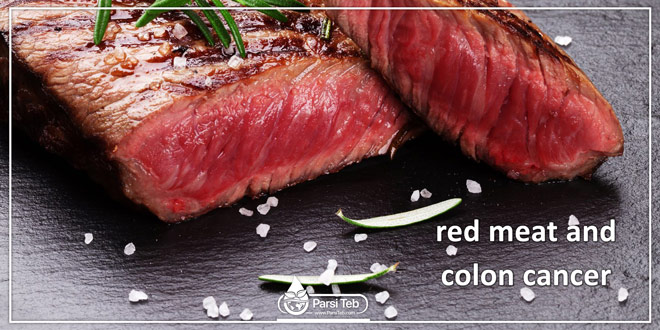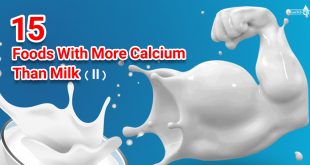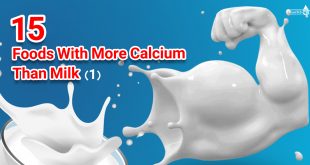High meat consumption and the expanding use of grain as feed can cause damage in the human realm. Medically, nutritionists believe that a diet rich in animal products contributes to a variety of maladies. Economically, middle-income developing countries that have attempted to provide urban dwellers with cheap meat too often have given the rural landless short shrift, while devoting growing shares of trade earnings to pay for imported feed. And socially, modern grain-based livestock production has become a major industry controlled by a handful of firms–driving small producers out of the market.
The Great Protein Fiasco:
The adverse health impacts of excessive meat-eating stem in large part from what nutritionists call the “great protein fiasco”–a mistaken belief of many Westerners that they need to consume large quantities of protein. This myth, propagated as much as a century ago by health officials and governmental dietary guidelines, has resulted in Americans and other members of industrial societies ingesting twice as much protein as they need. Among the affluent, the protein myth is dangerous because of the saturated fats that accompany concentrated protein in meat and dairy products. Those fats are associated with most of the diseases of affluence that are among the leading causes of death in industrial countries: heart disease, stroke, and breast and colon cancer. (Lipton 1983; WHO 1990; Kummer 1991; Pimentel et al. 1991; NRC 1989)
The U.S. National Research Council, the US Surgeon General, the American Heart Association, and the World Health Organization are among the organizations now recommending low-fat diets. From the current US norm of 37 percent of calories from fats–typical for Western nations–they recommend lowering fat consumption to no more than 30 percent of calories. (NRC 1988; Byrne 1988)
Recent scientific findings indicate that even that level may be too high. One study of 88,000 American nurses found daily red-meat eaters are two-and-a-half times as likely to develop colon cancer as near-vegetarians. Based on these findings, Walter Willett, director of the study and a researcher at Brigham and Women’s Hospital in Boston, commented, “the optimum amount of red meat you eat should be zero.” (Willett et al. 1990; Kolata 1990)
A Landmark Study of Diet and Health:
A landmark study of diet, lifestyle, and health in China–the largest such survey ever conducted–suggests that lowering fat consumption to 15 percent of calories prevents most cases of diseases of affluence. This study, known as the China Project, a joint effort of Chinese, British, and American institutions, tracked the diets of thousands of Chinese in dozens of countries. It showed that as fat consumption, protein consumption, and blood cholesterol levels rise, so does the incidence of heart disease, diabetes, and certain cancers. (Junshi et al. 1990; Vines 1990)
Surprisingly, Chinese villagers on low-fat, low-meat diets also suffered less anemia (iron deficiency) and osteoporosis (a bone disease associated with calcium deficiency) than their urban compatriots eating more meat. Both conditions are commonly thought to result from a diet too low in animal products. Study co-leader Colin Campbell of Cornell University told the New York Times: “We’re basically a vegetarian species and should be eating a wide variety of plant foods and minimizing our intake of animal foods.” (Junshi et al. 1990)
Squandering Resources:
If a diet rich in animal products is not an appropriate goal of public health policy, neither is it a wise development strategy. It creates dependence on imports for food and can widen the gap between rich and poor. Yet dozens of middle-income countries import livestock feed.
For a poor country where people eat few animal products, reaching self-sufficiency in food grains requires just 200 kilograms of cereals per person per year. But that number quickly rises when people switch from a grain-based diet to a meat-based one. Rapidly industrializing Taiwan, for instance, increased per-capita consumption of meat and eggs sixfold from 1950 to 1990. To produce those animal products required raising annual per-capita grain use in the country from 170 kilograms to 390 kilograms. Despite steadily growing harvests, Taiwan could only keep up with the demand for feed by turning to imports from abroad. In 1950 Taiwan was a grain exporter; in 1990, the nation imported, mostly for feed, 74 percent of the grain it used. (Vocke 1986; Sarma 1986; Bailey 1990; USDA 1990)
Mainland Chinese are following the Taiwanese up the meat consumption ladder. Since 1978, when agricultural reforms boosted production, meat consumption has more than doubled to 24 kilograms. The growth has been particularly marked in cities, where the government has helped create pig and poultry plants using Western-style grain-feeding technology. Though the country’s farmers have been able to grow sufficient feed grain for the swelling meat industry so far, few observers expect them to keep pace for much longer. The share of Chinese grain fed to livestock rose from 7 percent in 1960 to 20 percent in 1990. (Bishop et al. 1989; Bailey 1980)
An Appetite For Economic Problems:
China’s agricultural future may resemble that of the former Soviet Union, where rising meat consumption created economic problems. From 1950 to 1990, meat consumption tripled and feed consumption quadrupled. Use of grain for feed surpassed direct human consumption in 1964 and continued to rise. In 1990, Soviet livestock were eating three times as much grain as Soviet citizens. Grain imports had soared, going from near zero in 1970 to 24 million tons in 1990 (the world’s second-largest grain importer). (USDA 1989,1990,1991)
In the Middle East and North Africa, grain-fed livestock operations are proliferating, boosting the demand for imported feed. The richest Middle Eastern countries match Western levels of meat consumption by depending heavily on imported feed and meat. Egypt, the poorest country in the region, is also a major grain importer, partly due to rising grain-fed meat consumption in the cities. Since 1970, grain imports have risen from near zero to 8 million tons per year. (USDA 1990)
Middle-income Arab nations, such as Syria, also have seen rising meat consumption and soaring feed demand. The area in Syria devoted to barley for feed increased from 300,000 hectares in 1950 to almost 3 million hectares in 1989. Much of the expansion occurred on the country’s dry steppes, which are ecologically suited only for grazing. Farmers in traditional barley-growing areas, meanwhile, are heeding government advice to plow under soil-conserving fallow fields for continuous barley cropping. Yet neither the addition of new land nor the switch to single-crop production has sufficed to keep up with feed demand; Syria, in 1965 a barley exporter, now imports the cereal. (Treacher 1991; Cooper & Bailey 1991)
In other countries, the pattern is more complicated. Mexico, for example, despite its colossal debt burden, continues importing corn and sorghum. Indeed, Mexico generally imports between one-fourth and one-third of the grain it consumes. Imported sorghum is used as feed, while imported corn is used as food. But the need to import corn is partly a consequence of shifts in Mexican agriculture from growing corn to growing sorghum for feed. (Barkin & Dewalt 1988; USDA 1988)
What is true for many developing countries individually is also true of them collectively. On balance the Third World exported grain until the early sixties; by the late seventies, it was consistently importing cereals. The change came not from just growing populations but also from exploding livestock industries. The FAO reports that 75 percent of Third World imports of so-called coarse grains–corn, barley, sorghum, and oats–fed animals in 1981. Little has changed since. As US Department of Agriculture trade specialist Gary Vocke writes: “Imports of corn and sorghum [for feed] have outpaced domestic production, leading developing countries to a lower level of self-sufficiency–a trend that will accelerate as livestock feeding expands in the next 10 years. (USDA 1990)
Meat Consumption Among The Affluent, at the Expense of the Poor:
Higher meat consumption among the affluent frequently creates problems for the poor, as the share of farmland devoted to feed cultivation expands, reducing production of food staples. In economic competition for grain fields, the upper classes usually win. In Egypt, for example, over the past quarter-century, corn grown for animal feed has taken over cropland from wheat, rice, sorghum, and millet–all staple grains in Egypt. The share of grain fed to livestock rose from 10 percent to 36 percent. (Barkin et al. 1990; Barkin 1991)
Likewise, the area in Mexico planted to corn, rice, wheat, and beans, the staples of the Mexican poor, has declined steadily since 1965, while area planted to sorghum has grown phenomenally. From the mid-sixties to the mid-eighties, sorghum expanded from 2 percent of grain land to 16 percent, as corn fell from 83 percent of grain land to 69 percent. Sorghum, grown mostly on irrigated, mechanized commercial spreads, is now Mexico’s second-ranking crop by area. The grain is used to raise chicken and pork for urban consumers. In total, Mexico feeds 30 percent of its grain to livestock, although 22 percent of the country’s people suffer from malnutrition. (Barkin & DeWalt 1988)
The share of cropland growing animal feed and fodder in Mexico went from 5 percent in 1960 to 23 percent in 1980, a transformation agriculture analyst David Barkin of the Autonomous Metropolitan University in Mexico City refers to as ganaderizacion (“livestockization”) of the Mexican countryside. He sees the trend outside of Mexico as well. In Peru, for example, pastures have replaced potatoes, and feed corn has replaced staple corn. (Barkin & DeWalt 1988)
With two colleagues from the United States, Barkin examined agricultural developments in 24 Third World countries. They found clear evidence in 13 countries that farmers were switching from food crops to feed crops; in eight of them, farmers had shifted more than 10 percent of grain land out of food crops in the past 25 years. Worse, Barkin and his colleagues concluded that, at least where data were available–Brazil, Columbia, Egypt, Mexico, Peru, the Philippines, South Africa, Thailand, and Venezuela–the demand for meat among the rich was squeezing out staple production for the poor. (Barkin et al. 1990)
Industrial Farming at the Expense of Small Farms:
Beyond its effect on food security for the poor, grain-fed intensive production–because it is essentially an industrial operation–tends to create inequities within agriculture. In traditional production, animals play an equalizing role in agriculture. Because grass, crop wastes, and other fodder are widely dispersed, they are best utilized by small farms. Indeed, in most developing countries animals are more evenly distributed among agricultural families than land. By contrast, ownership of grain-based livestock production tends to concentrate in ever-fewer hands, because grain readily lends itself to economies of scale. The larger the operation, the lower the overhead costs per animal, and the cheaper the product. (Lipton 1988)
In most countries, even as meat output rises, the number of livestock producers falls. Animal farms keep growing in size and dwindling in number. The number of Japanese pork and poultry firms fell by two-thirds between 1965 and 1987. Thailand’s chicken industry made a similar transition in the first half of the seventies. Likewise, five firms control 75 percent of Brazil’s commercial poultry production. (Bishop et al. 1989)
In the United States, where beef cattle are raised on grass for a year before going to the feedlot, the industry’s profile reflects the concentrating power of grain feeding. More than a million farms and ranches raise young beef cattle, but four companies slaughter nearly 60 percent of them. Since 1962, the number of large American beef feedlots (those capable of holding 16,000 head of cattle) has risen from 23 to 189, while the number of small feedlots (those holding no more than 1000 head) has dropped by 117,000. The same pattern applies to the US pork and poultry industries. Together, three poultry companies now produce nearly 40 percent of broiler chickens, and the number of pig farms has declined by 85 percent since 1950. (ITC 1990; Charlier 1990; Martinez 1991)
The Sprawl of Animal Agriculture:
Ranch-based livestock production also fosters inequality between agriculturists in Latin America, where ranches expand at the expense of forests and arable land. Ranches create few jobs for this region’s numerous jobless rural workers, employing just one person per 1,500 hectares on typical spreads in the Brazilian Amazon. Indeed, in Latin America, no other major type of agriculture enterprise creates fewer jobs per hectare than ranching. In Central America, ranchers have expanded not just into forests, but also into fertile land more appropriate for crops. In 1950, 35 percent of Costa Rica’s arable farmland was in pasture; in the early nineties, the figure was 54 percent. As much as two-thirds of the rich farmland along the Pacific coastal strip of Central America is pasture. (Hecht 1990; Annis 1990; Leonard 1987)
The sweeping advance of ranching into forests in Latin America cannot be explained by the profitability of beef production. Real estate speculation is the overriding motive. In Latin America’s forest frontier zones, where land is up for grabs, the value of cattle is dwarfed by the value of the earth under their hooves. When roads come through, or when minerals are discovered nearby, land values can skyrocket. An entire industry has emerged around leveling forests for pasture, selling the land for a quick profit, the repeating the venture. (Hecht 1990; Fearnside 1989)
For the land speculator, cattle ranching is simply the cheapest way to claim property: it takes little investment or labor, and states recognize pasture as the kind of “productive” land use to be rewarded with a property title. States also bypass ranches in land reforms, which distribute idle and “unproductive” lands to the dispossessed. Where inflation rates are high, as in much of Latin America, urban investors are especially keen on buying assets that retain their value, such as land. (Hecht 1990)
Closing Remarks:
The problems with animal agriculture mostly fall in the category of “too much of a good thing.” Too much meat consumption leads to illness. Too much meat production leads to dependence on grain imports, a food system skewed against the poor, and a worsening environmental predicament. All the same, if livestock production is linked to a profusion of problems, the root causes of those problems are found in human institutions. Indeed, the livestock industry’s shortcomings are faithful reflections of deeper faults in human societies.
 Parsi Teb Physical and Mental Health Journal
Parsi Teb Physical and Mental Health Journal 



